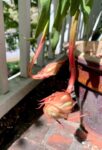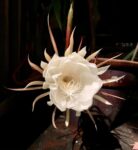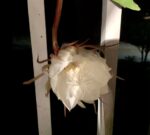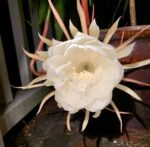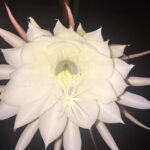
My sisters used to tease me about my desire to grow what they called “weird” plants, outdoors and inside. I always referred to those plants as “unique.”
After doing a little research, some of the plants I’ve grown are considered “exotic.” I love that description even better than unique. Research also taught me that exotic is the category for some plants that I’ve grown that I would never guess fit in that group. In fact, some are tropicals which are also labeled as exotic plants.
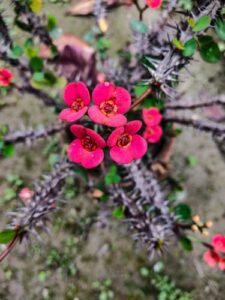 For example, I had a Crown of Thorns for about 20 years. It was about four inches tall when I brought it home and over the years it grew to a multi-branched plant about four feet tall that was covered in beautiful coral colored blooms.
For example, I had a Crown of Thorns for about 20 years. It was about four inches tall when I brought it home and over the years it grew to a multi-branched plant about four feet tall that was covered in beautiful coral colored blooms.
I regret to report that I tempted fate one too many times and the Crown of Thorns did not survive a heavy frost. I was very sad about that loss but I will have another.
I’ve also grown Adenium or Desert Rose. The base of this plant looks like a miniature version of a swollen tree trunk. The flowers they produce are breathtaking!
I love bromeliads which come in many varieties, each with a very unique look. They can be grown outdoors in the spring and summer but they make an exceptional indoor plant for medium to bright light. I love to keep a bright red Guzmania on my coffee table, especially during the holidays.
I’ve also tried my hand at plumeria and Bird of Paradise. Both of these require more attention to get the wow-factor blooms they produce.
In the summer, I’m always on the hunt for tropical or exotic colored hibiscus. They are a little more challenging to find in garden centers but definitely worth the effort. Many varieties are also available at on-line nurseries and greenhouses.
One exotic that I’ve never tried, at least not yet, is Cereus. You have to be seriously dedicated to attempt this one. They are a member of the cactus family only without the brutal stickers. The flowers are large, usually white, and here’s the kicker, they only open at night once a year. That is for a single night!
Cereus is easy to care for, requiring a bright window and minimal watering. Apparently they are worth the wait. I have two friends who grow them and will attest to the fact that the wait offers great rewards. Both of them have stayed up until the wee hours and done acrobatics with a flashlight to capture the amazing beauty of these rare flowers. Oh, as a bonus, their fragrance is wonderful. Check out this progression of exotic Cereus:
I don’t know about you but I think it would be worth losing a little sleep to witness this unique flowering phenomenon. I’m going to be giving Cereus a try in the near future. Seriously!
Have you ever grown any of the exotics? What is on your wish list to try?
*Many thanks to Jim Rutland and Kim Poe for sharing their Cereus experience with us.





